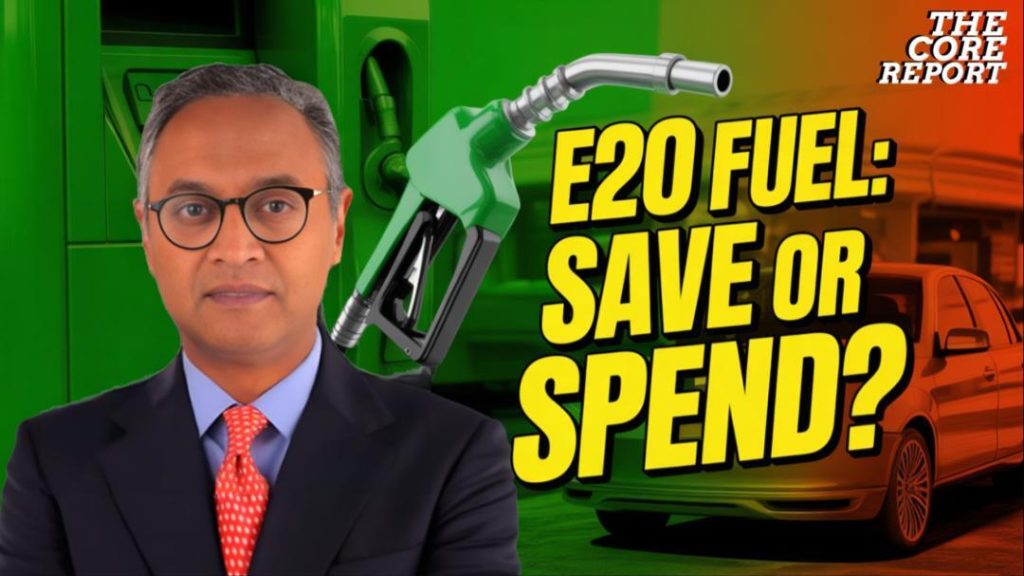
E20 Fuel in India: Benefits, Risks & What Vehicle Owners Must Know
In the quest to reduce carbon emissions, boost energy security, and support farmers, the Indian government has introduced E20, a blend of 20% ethanol and 80% petrol. This new fuel is aimed at revolutionizing the country’s transportation sector, but what does it mean for vehicle owners? In this post, we’ll delve into the benefits, risks, and what you need to know to navigate the transition to E20 fuel.
Benefits of E20 Fuel
The most significant advantage of E20 fuel is its environmental benefits. The ethanol component helps reduce greenhouse gas emissions by up to 40%, making it a more sustainable option compared to traditional petrol. Additionally, E20 fuel is expected to reduce India’s dependence on imported oil, thereby improving the country’s energy security.
Another significant benefit is the support it provides to Indian farmers. The government’s decision to introduce E20 fuel is expected to create new opportunities for farmers to sell their surplus sugarcane, helping to address the issue of sugarcane waste.
Studies conducted by the government have also reported improved acceleration and fuel efficiency with E20 fuel. In fact, a study by the Indian Institute of Technology (IIT) found that E20 fuel can improve fuel efficiency by up to 10% compared to traditional petrol.
Risks Associated with E20 Fuel
While E20 fuel offers several benefits, there are also risks associated with its adoption. One of the primary concerns is the potential impact on older vehicles that are not designed to run on E20 fuel.
Older vehicles may not be compatible with E20 fuel, which could lead to engine wear, fuel system corrosion, and mileage loss. In fact, some vehicle owners have reported issues such as rough idling, decreased performance, and increased fuel consumption after switching to E20 fuel.
To mitigate these risks, the government has implemented measures to ensure a smooth transition. By 2025, all new vehicles will be E20-compliant, which means that manufacturers will design vehicles that can run on E20 fuel from the outset.
What Vehicle Owners Must Know
If you’re a vehicle owner, here are some key things you need to know about E20 fuel:
- Check your vehicle’s compatibility: Make sure your vehicle is compatible with E20 fuel before switching. Check your vehicle’s manual or consult with the manufacturer to confirm.
- Use the right fuel: If your vehicle is not compatible with E20 fuel, stick to traditional petrol. Using the wrong fuel can cause damage to your engine and fuel system.
- Monitor your vehicle’s performance: Keep an eye on your vehicle’s performance after switching to E20 fuel. If you notice any issues, consult with a mechanic or the manufacturer.
- Consider upgrading: If your vehicle is not compatible with E20 fuel, consider upgrading to a newer model that is E20-compliant.
- Take advantage of government incentives: The government offers incentives for vehicle owners who switch to E20 fuel, such as tax benefits and subsidies. Take advantage of these incentives to make the transition smoother.
Conclusion
E20 fuel is a game-changer for India’s transportation sector, offering several benefits including reduced carbon emissions, improved fuel efficiency, and support to farmers. However, there are also risks associated with its adoption, particularly for older vehicles that are not designed to run on E20 fuel.
To mitigate these risks, the government has implemented measures to ensure a smooth transition. By 2025, all new vehicles will be E20-compliant, easing adaptation concerns. For vehicle owners, it’s essential to check their vehicle’s compatibility, use the right fuel, monitor their vehicle’s performance, consider upgrading, and take advantage of government incentives.
As the Indian government continues to promote E20 fuel, it’s crucial that vehicle owners are aware of the benefits and risks associated with this new fuel blend. By making informed decisions, we can ensure a smoother transition to a more sustainable and environmentally friendly transportation sector.
News Source:
https://youtu.be/zM_EyWPyliQ






